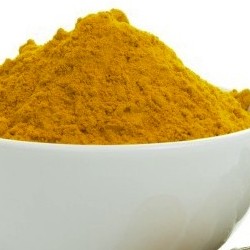Editor’s Note: This opinion column is in reference to an article posted earlier this month. Clinical Utility of Curcumin Extract, by Gary N. Asher, MD, MPH; Kevin Spelman, PhD (visible in the attached slideshow). In the article, Asher and Spelman discuss the potential for curcumin and the barriers to effectiveness, namely bioavailability. Today’s Practitioner received an opinion column from an award-winning researcher in this field, Mohammed Rafi, PhD. Rafi, the CEO of Bioactives American, discusses advances in bioavailability and offers information on prescribing curcumin to patient for optimum efficacy.
Curcumin has become one of the nutrient “darlings” in recent years, highly regarded for its antioxidant properties and its effectiveness in reducing cellular inflammation, which is thought to be as a precursor to numerous health conditions and diseases ranging from irritable bowel syndrome, joint health to some types of cancer. In fact, curcumin is reported to have therapeutic properties in over 580 health conditions. [1] With almost 4,000 pre-clinical investigations, curcumin, the primary polyphenol of turmeric whose active properties are known as curcuminoids, is one of the most thoroughly-studied ingredients in biomedical literature. That being said, there is little clinical evidence of its efficacy outside of animal studies. The result is a variety of curcumin products on the market with varying degrees of efficacy, and most challenging, its bioavailability.
The key challenge with curcumin is that while it has tremendous health benefits, it is very limited in its bioavailability. Many curcumin products on the market are minimally absorbed but largely metabolized and quickly excreted, which means they never reach their potential in effectiveness. As with many nutritional ingredients, the type of formulation determines its bioavailability in the human body and therefore its effectiveness.
With so many curcumin products available to consumers, it’s important to note that not all curcumin is the same. According to a report by Consumer Labs, based on tests of several curcumin products, it found significant problems with two out of the nine turmeric and curcumin products.[2] Two contained only 33.1% and 52.9%, respectively, of their expected curcuminoids. And one contained less than 10mg of these compounds, while the typical dosage shown to work in studies is hundreds of milligrams. One was also found to be contaminated with small amount of toxic heavy metals.
In essence, most branded products have bioavailability from seven-fold to 29-fold compared to regular curcumin 95. Any studies to date have been administered by manufacturers with a small group of subjects, less than 9-20 volunteers. What is missing is an independent study evaluating all the branded ingredients.
How does one navigate the sea of curcumin supplements on store shelves? There are a few basic guidelines for vetting different formulations. Make sure the curcumin formula:
- Utilizes advanced technology to enhance bioavailability, since absorption is one of the key obstacles in effectiveness of any curcumin product.
- Delivers three curcuminoids found in turmeric: curcumin is the primary principle (75-80%) in turmeric, but there are two more – demethoxycurcumin (15-17%) and bisdemethoxycurcumin (2-4%)
- Avoids unnecessary fillers, additives and risky excipients, such as magnesium stearate, polysorbate 80, isopropyl myrstate, dibasic calcium phosphate (DCP)
- Is sourced from raw turmeric material containing at least 95% curcuminoids
- Minimizes serving size and frequency
- Comes from a reputable manufacturer experienced in high quality. Synthetic curcumin is cheap and now blended with natural curcumin by some manufacturers. The spiking can be detected by “carbon dating method”, which unfortunately isn’t strictly adhered to in the industry. Solvent levels, pesticides and heavy metals are other factors to consider. Unfortunately consumers are dependent on the manufacturer to ensure their efficacy in testing for quality and purity.
- Yields a final product at a reasonable price
In terms of trends and looking ahead, small particle sized curcumin by micronization has been shown to increase bioavailability by nine fold in a recent study. (Schiborr et al, 2014). New delivery mechanisms to increase bioavailability is also a noteworthy trend. Organic curcumin products are gaining popularity in consumer products, and water soluble curcumin beverages are gaining popularity in functional drinks in Japan and will make their way to the U.S. as the functional foods industry continues to grow.
[hr]
Editor’s Note: CurQFen, a bioavailable curcumin 95 from Bioactives American Corporation, and Akay, India has been shown in human studies to be 15.8 times more bioavailable than generic curcumin. The patent-pending formulation (BR213 curcuma galactomannoside) is impregnated with a soluble dietary fiber isolated from fenugreek. There are several manufacturers using CurQFen in their products. Swanson’s product consisting of CurQFen (15.8 times more bioavailable,) and it contains 40% Curcumin 95.
[hr]
This information is provided by Mohamed M Rafi. Ph. D. is the CEO and founder of Bioactives American Corp., a supplier of science-based ingredients for pharmaceuticals, nutraceuticals, cosmetics and dietary supplements. Dr. Rafi is a former professor of graduate and undergraduate courses in food microbiology, biochemistry, nutraceuticals and nutragenomics at Rutgers University. He was awarded a Gallo Award for Outstanding Cancer Research and a newsmaker award from the American Chemical Society. Dr. Rafi has used his experience as a co-investigator in clinical trials for the Cancer Institute of New Jersey to discover and develop novel botanical and functional bioactives with applications in cancer and other inflammatory-related diseases and health conditions.
Bioactives American is a specialty ingredient company whose mission is to provide formulations backed by sound science for the health and wellness industry. It offers a wide range of services including contract manufacturing, highly specialized branded ingredients and stand-alone ingredients with superior nutritional efficacy. www.bioactivesamerica.com
[1] Greenmediainfo.com, July 2, 2012, 500 Reasons Why Turmeric May Be the World’s Most Important Herb
[2] Consumerlab.com, December 14, 2013, Product Review: Turmeric and Curcumin Supplements and Spices
[3] Schiborr, Christina., Kocher,A., Behnam D., Jandasek J., Toelstede, S and Frank J. The oral bioavailability of curcumin from micronized powder and liquid micelles is significantly increased in healthy human and differs between sexes. Mol. Nutr. Food. Res, 2014, 0, 1-12.





